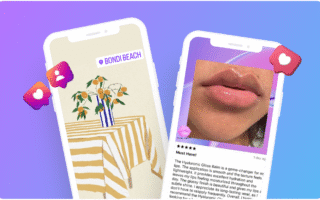Face Swapper replaces a face in a source image with a face from another image while keeping lighting, head pose, camera distance, and background intact. The system blends skin tone, corrects perspective, and rebuilds occluded areas such as hairlines, collars, and glasses. Output images are suitable for product mockups, concept art, presentation decks, and social posts where a realistic identity change is required.
How the workflow is structured
- Upload a base image. JPEG or PNG works well. The app keeps the original resolution where possible and fills in missing details during blending.
- Provide the face reference. You can upload a face photo or pick a preset. Face detection runs on the base image and the reference to locate landmarks such as pupils, nose tip, and mouth corners.
- Run the swap. The engine builds a face representation, aligns it to the head pose in the base image, and performs a photometric match for exposure and color temperature. The final pass handles edges, micro shadows, and hair overlap.
- Review and export. You can download the result in the same format as the input or convert to JPEG for compact delivery.
This sequence is fast and simple. New users reach an acceptable result without long setup. Experienced users can iterate with multiple references to reach a tighter likeness or a more stylized look.
Quality controls that matter in practice
Landmark precision
Accurate landmark detection is the foundation for a credible swap. The tool locks onto the eye line and nose bridge first, then refines the jaw contour. This reduces common artifacts such as misaligned pupils or stretched cheeks.
Lighting and color adaptation
The engine estimates scene illumination using highlights and shadow falloff on the original face. It then applies a local color match to the inserted face. This step prevents the pasted look that often appears when a reference was shot under different light. Skin tone adaptation looks natural even when the base scene uses cool fluorescent light or warm sunset light.
Hair and edge treatment
Edges at hairlines and beards are tricky. The tool softens transitions, reconstructs wisps, and retains flyaway hairs from the base image. This preserves realism without the plastic rim that many older methods produce.
Texture and pore detail
On close crops, plastic skin destroys credibility. The model carries over grain and micro texture from the base image. If the base image is sharpened, the result stays consistent rather than smoothing the face.
Data and privacy notes
Uploads are used for processing. You can remove files after export. For work with sensitive assets, keep a local copy and avoid embedding private EXIF data in shared results. If you operate in a regulated environment, clear rights for the reference face and the base image and follow internal review rules.
Use cases by role
Designers and illustrators
You can test visual concepts quickly. Example: swap a face to preview a header image variant for an app landing screen. The result slots into Figma, Sketch, or Lunacy with no extra masking. When you prepare a set of mockups for client review, you can keep the same model identity across several scenes for consistency.
Design students
Assignments often require consistent characters across posters, web pages, and packaging comps. The swapper helps build a coherent series without hiring a model. Keep a journal of reference choices and lighting notes so your workflow is reproducible.
Marketers and content managers
Campaigns need rapid iteration. You can adapt a hero image for different regions by swapping faces to reflect local representation policies. Maintain a release spreadsheet that tracks the source file, the reference face, usage rights, and publication dates. This simplifies audits.
Business representatives
Proposals and pitch decks benefit from realistic mockups that look tailored to the client industry. Swap a face to match a target persona while you validate message fit. Keep originals and edited versions separate and label them clearly so the context is never lost during review.
Photographers
You can experiment with composition and lighting ideas without reshooting. For editorial work, get legal approval before any identity change. For commercial composites, use the tool to replace a blink or a soft expression when you do not have an alternate frame.
App developers
You can prototype profile photos or avatar previews inside your app UX. The consistent output and clean edges simplify further processing such as background removal, segmentation, and resizing for responsive layouts.
General users
Simple goals work well. Swap a face for a meme, a party invite, or a playful avatar. Keep it respectful and opt in only with people who consent.
Interface and controls
The UI exposes only the knobs that influence quality for the majority of cases. You can re run detection, try alternate references, and toggle alignment hints. Export keeps the same pixel dimensions by default, which avoids layout shifts when you drop the result into a design file.
Batch and reproducibility
Consistent campaigns require repeatable settings. For a set of product photos shot from similar angles, reusing the same reference face yields stable results. Keep a folder naming scheme that ties each output to its input and its reference. Example: project name plus scene plus reference tag.
File handling and formats
The tool preserves color space information when present. If you provide sRGB, export remains in sRGB, which is the safest choice for web delivery. If your workflow relies on CMYK for print, convert at the layout stage in InDesign or Affinity Publisher after the swap. Avoid heavy compression before the swap. Compression artifacts can confuse landmark detection.
Limits and how to work around them
Extreme angles with heavy occlusions can push the model beyond its comfort zone. Try a reference with a closer head pose or pick a frame with less obstruction. Very low light scenes with strong color casts can reduce texture consistency. A gentle white balance correction on the base image often helps. If a face is tiny relative to the frame, crop in, run the swap, then place the result back into the original composition.
Legal and ethical guardrails
Face replacement is sensitive. Use it with consent. For commercial use, verify that your license covers both the base image and the reference face. If your campaign includes public figures, check local publicity rights and platform rules. Keep a change log inside your project files so reviewers can see what was altered and why. Do not imply endorsements that do not exist.
Practical comparisons without hype
Photoreal swaps succeed or fail on four measurable axes. Alignment accuracy. Lighting adaptation. Edge quality at hair and jaw. Texture continuity. Face Swapper scores well across these axes in everyday design tasks based on test images that include indoor fluorescent light, outdoor overcast light, and mixed light. Results remain consistent across moderate head turns and common accessories such as glasses. You still need judgment on sources and references, yet the base model behavior is predictable.
Integration with other tools
The output works cleanly with Icons8 Background Remover and Smart Upscaler if you need transparent PNGs or higher pixel density for large banners. In Figma and Sketch you can replace a layer and keep constraints. In Photoshop you can place the output as a linked Smart Object and retain non destructive edits.
Step by step recipes
Hero image for a landing page
- Pick a base photo with room for copy and a clear face.
- Select a reference face that matches the brand persona in age and style.
- Run the swap. Review edges around hair and collars.
- Export JPEG at the target width for the hero section. Keep a high resolution version for retina assets.
- Place into your layout. Check that eye line and focal point support the hierarchy of the page.
Consistent cast across a slide deck
- Choose one reference face for the primary character.
- Run swaps on three or four scenes that show the product in use. Keep lighting similar across slides.
- Export and name files with slide numbers for quick assembly.
Quick meme or social post
- Crop to the subject. Larger faces swap better.
- Run the swap. Keep the first acceptable result. Over polishing drains the joke.
- Export PNG if you plan to layer stickers or type.
Where to place the link
If you need the product for your project, use the link here: face swap. This leads straight to the tool.
Reliability tips from everyday use
Keep references with neutral expression. Smiles with open mouths require more careful alignment. Glasses work fine if the frames are not extremely thick. Facial hair blends acceptably when the base image already contains stubble or a beard. If you see color mismatch around the jaw, slightly reduce saturation on the inserted area after export using a soft brush in Photoshop.
Performance notes
Processing time scales with input resolution and the number of faces detected. Single face scenes finish quickly. Group photos run multiple passes. If you plan a batch, normalize input size first to achieve predictable timing and memory use. Avoid images with heavy film grain or demosaicing artifacts from extreme ISO settings when possible.
Accessibility and transparency
When edited images appear in educational materials or training decks, label composites openly. A simple caption that states that the face was replaced is often sufficient. This keeps trust with learners and stakeholders.
What makes the output credible
Human perception spots mismatched gaze, uncanny lighting, and wrong skin micro texture first. The tool handles these failure modes with alignment and color adaptation, edge refinement, and texture conservation. You still need to select good source and reference pairs. Good in, good out remains the rule.
Verdict
Face Swapper provides dependable, repeatable swaps for design and marketing work without a long learning curve. It respects base lighting, keeps edges clean, and preserves texture. The feature set covers the needs of designers, illustrators, students, marketers, content teams, photographers, developers, and everyday users who want credible composites. Use it with consent, track your sources, and keep a tidy archive. The results will stand up in client reviews and internal QA.




